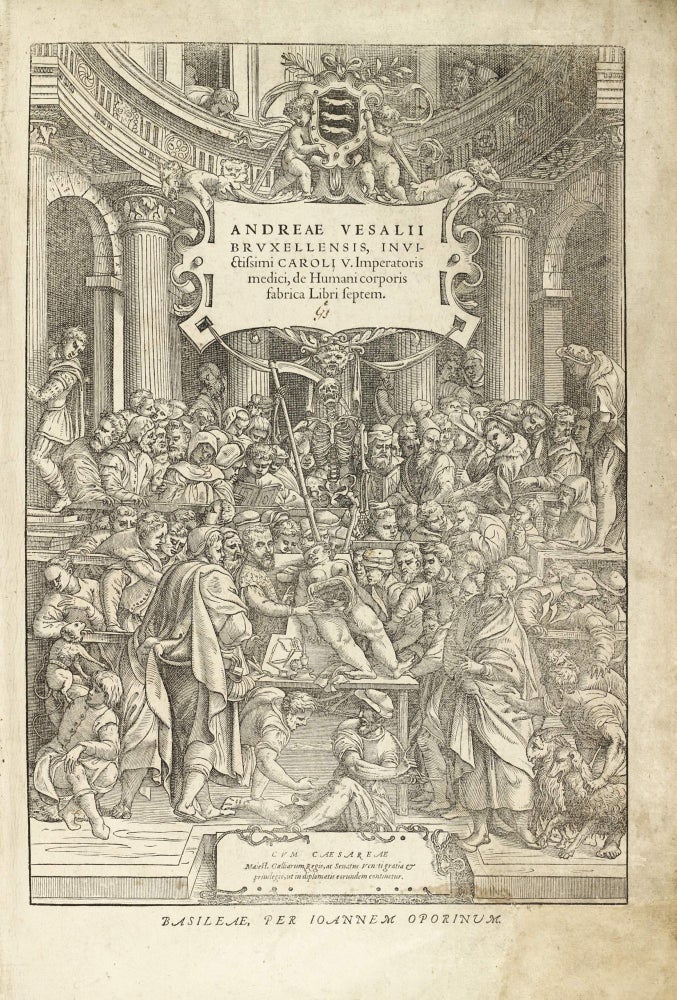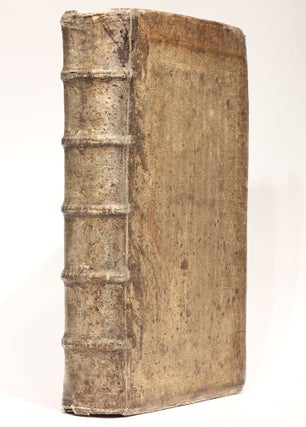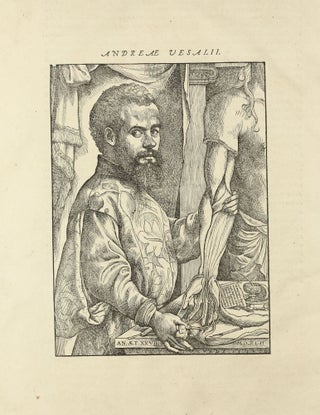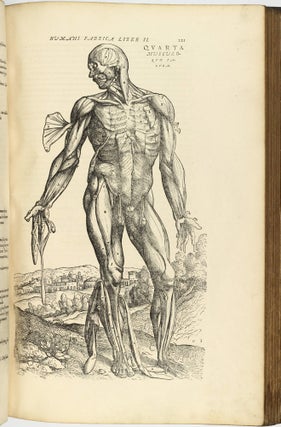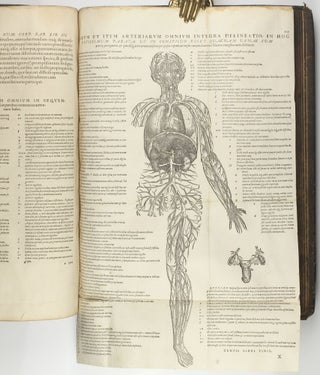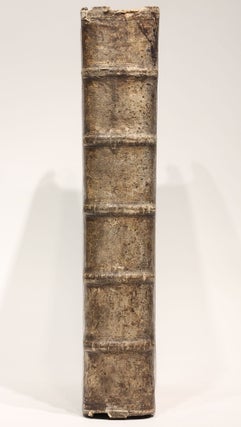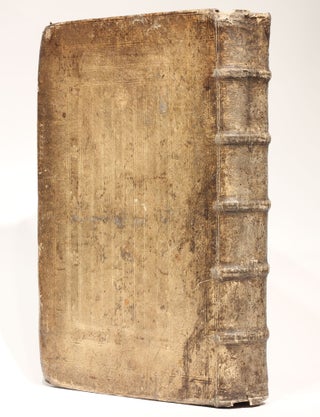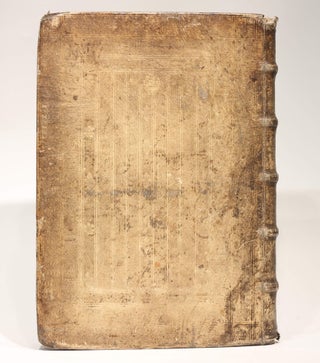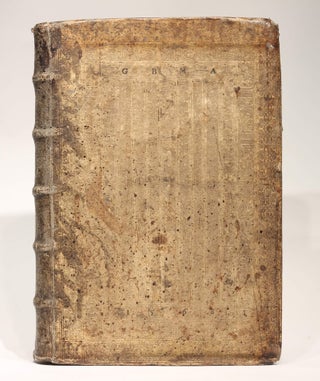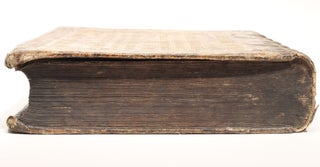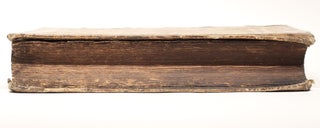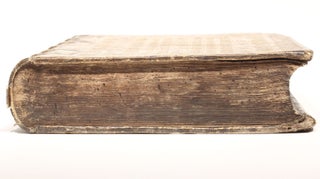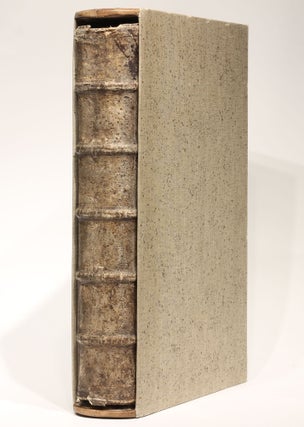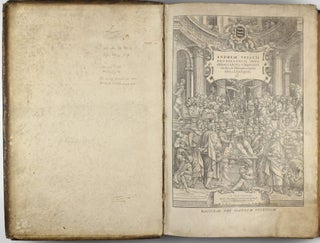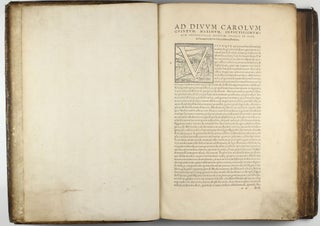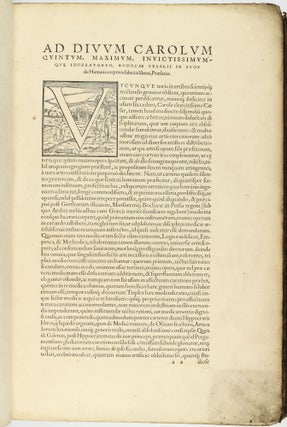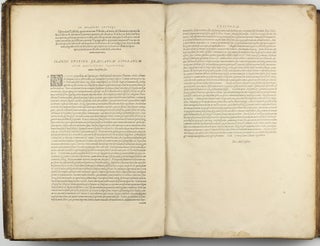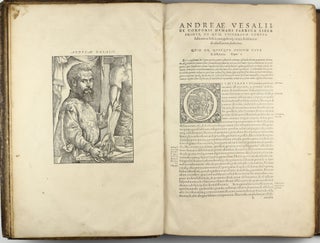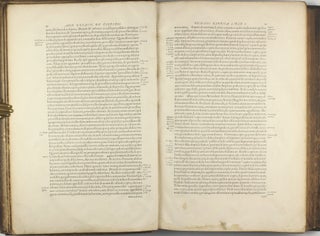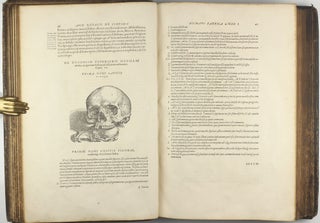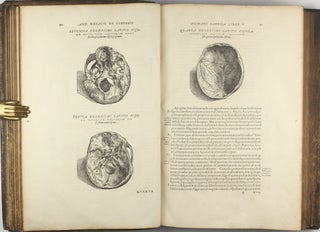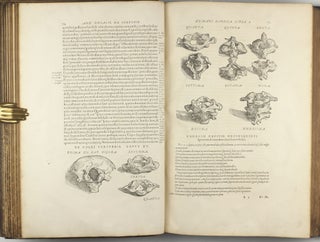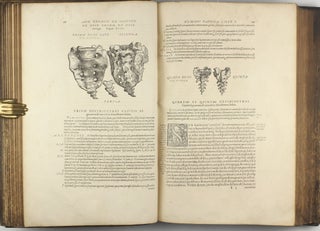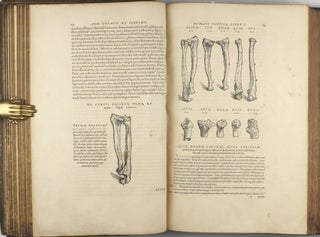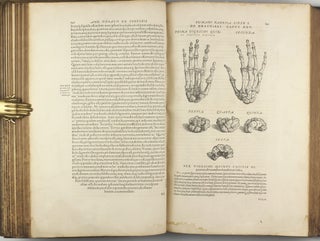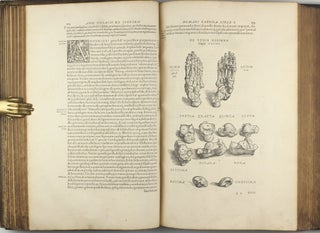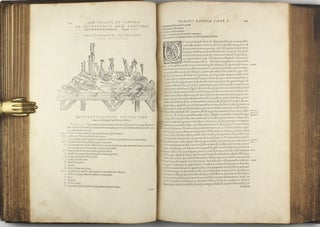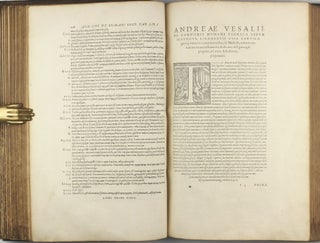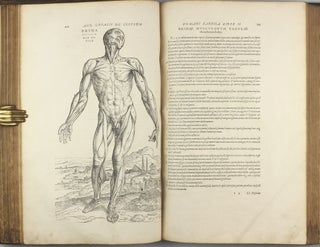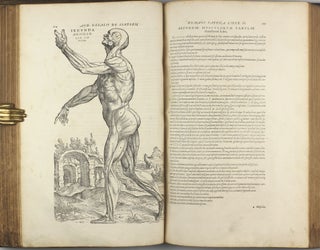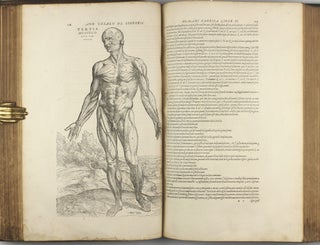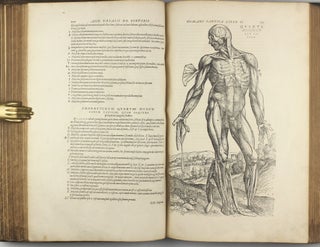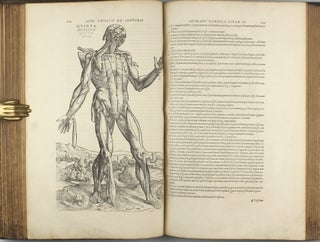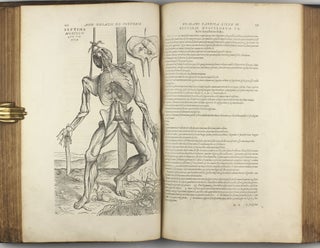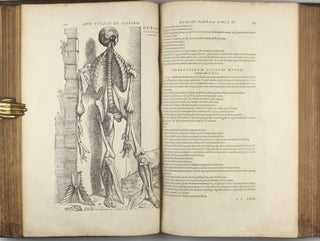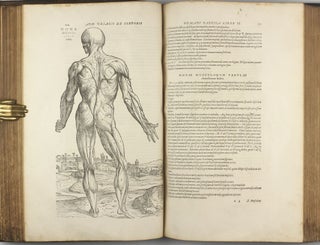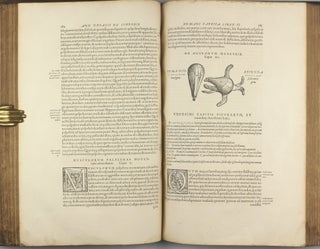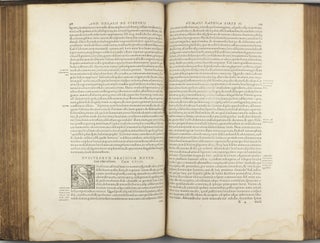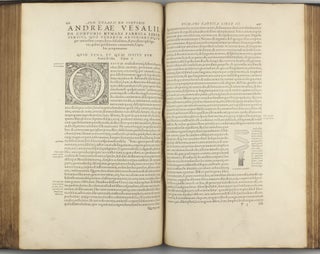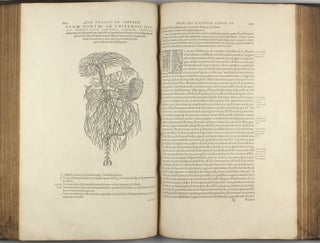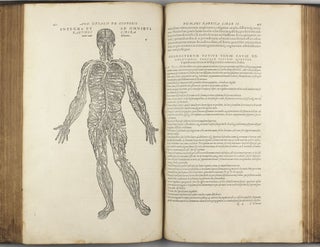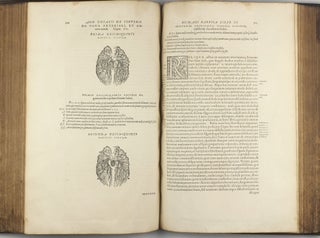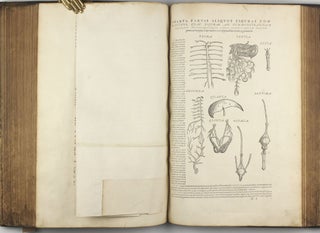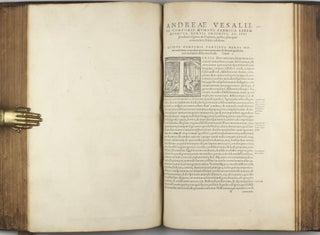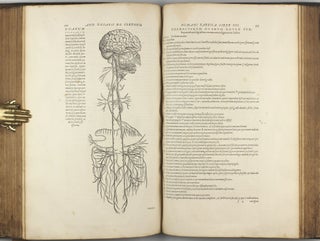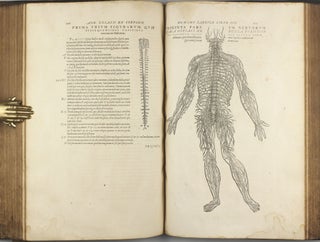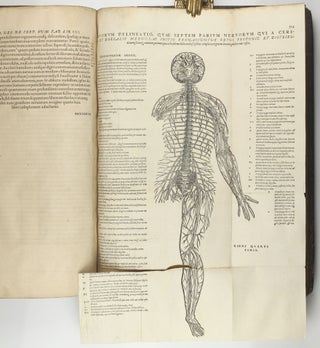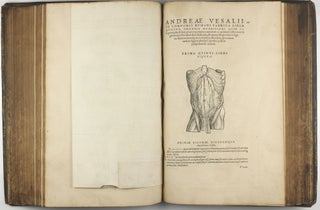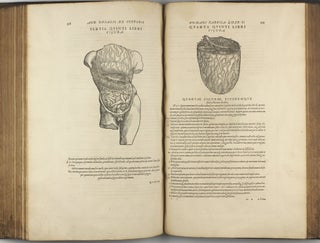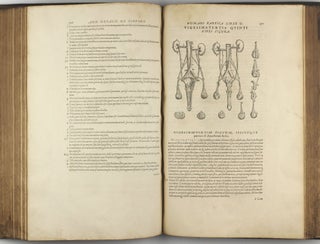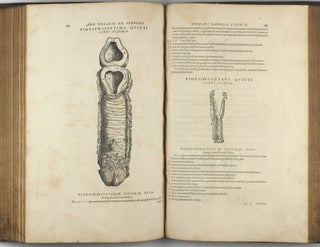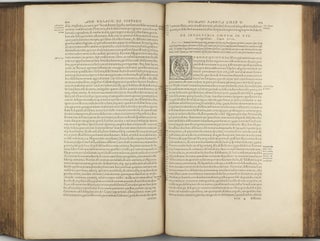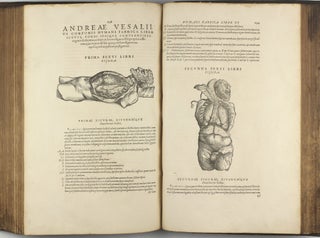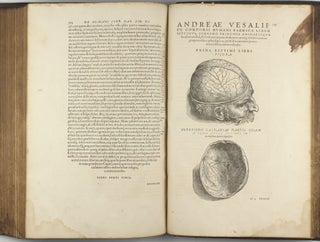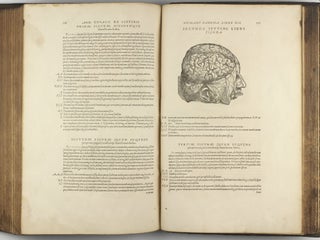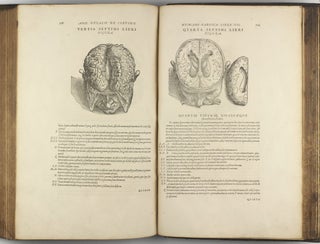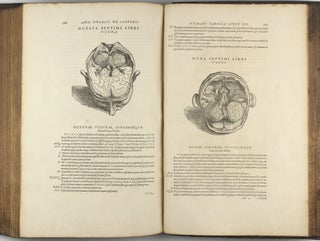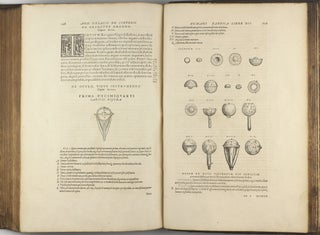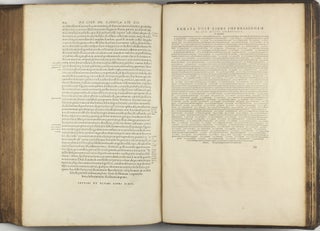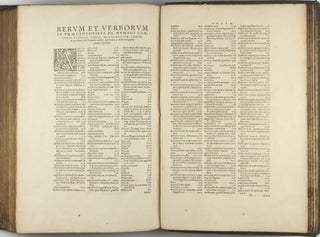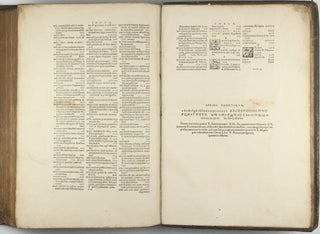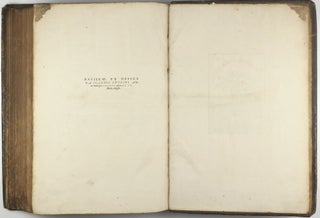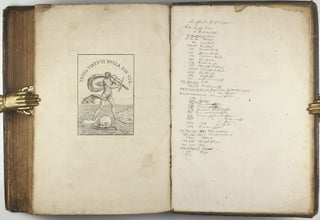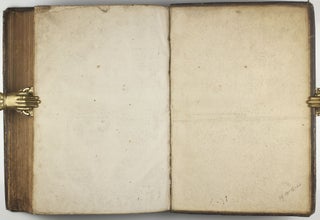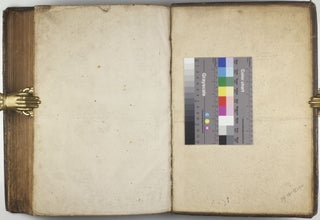The most important anatomical work of the 16th century
De humani corporis fabrica libri septem.
Basel: Johannes Oporinus, 1555.
2nd Edition. Hardcover. Very Good. Item #003710
August 1555. Large folio (430 x 287 mm). [12], 824, [48] pp. Woodcut title-page, author's portrait on f. a6v, numerous woodcut illustrations (of which 17 full-page), ornamental initials (ranging in size from 7 to 12 lines), 2 folding tables with woodcut diagrams, errata on f. Bb1r and printer's device on verso of final leaf Ee6 which is otherwise blank. Signatures: a-z6, A-V6, X2, Y-Z6, aa-zz6, Aa8, Bb-Ee6. Colophon: Basileae, ex officina Ioannis Oporini, Anno Salutis Christum partæ MDLV. Mense Augusto. The folded bifolium insert (nervous system) is bound between bb5 and bb6 (numbered pp. 553-554). The single unnumbered f. X2 (consisting of eight anatomical figures, originally intended to be cut out and superimposed on veno-arterial figure on previous leaf) is bound between f. V6 and Y1; leaf X1 is a folded double leaf. Contemporary pigskin over thick boards, spine with 5 raised bands, covers with elaborate blind-tooling including floral bands, portraits of saints and bible verses as well as the date 1568 and initials G.B.M.A. of the first owner on front cover; brown-dyed edges (soiling and spotting of leather, spine ends partly chipped, corners bumped and scuffed, lacking first flyleaf). Protected in modern slipcase. Generally bright and clean throughout internally. The title-page dust-soiled and with old repair at lower corner, f. a2 dust-soiled at lower corner, some minor marginal dust- and finger-soiling elsewhere, occasional traces of light dampstaining to outer edges, ink smudge at upper corner of p.755, upper blank corner of final 3 leaves stained and frayed; the two folding plates backed on lowermost versos, first plate with a tear along fold between two lines of text, the second with three tears, one longer and affecting image, one diagonally through some of the text. Provenance: Walter Parviainen (1922-1999), Switzerland; list of selected illustrations in 19th century manuscript on final flyleaf, collation notes in pencil on front pastedown. Exceptional, tall copy in its first, untouched binding. ----
THIRD EDITION, SECOND FOLIO EDITION, OF THE MOST IMPORTANT ANATOMICAL TREATISE OF THE SIXTEENTH CENTURY. It represents a significant improvement over the first edition of 1543 as it contains Vesalius' final text revisions. The text was reset with 49 lines instead of 50 to the page, and printed on a heavier paper stock of better quality. The ornamental initials and title-page were recut, but the anatomical illustrations and portrait of Vesalius were printed from the wood blocks of the first edition.
"This work is the first modern treatise on anatomy based upon dissections of the human body. Vesalius really described the body as who knows it, for the first time fully, and for the first time accurately" (Osler). "The impression of the woodcuts is often clearer, and more beautiful than in the previous editions; some of the figures have been somewhat improved upon in the cutting and in the lettering. The presswork is more splendid; the fancy initials throughout are larger and more beautiful and also adorned with drawings different from those in the first edition. This second [folio] edition therefore has advantages over the first on account of additions in the text and in the illustrations and particularly on account of its more splendid makeup" (Choulant-Frank). Vesalius' groundbreaking work on the anatomy of the human body was first published in 1543, the same year as Copernicus' work on heliocentrism, though Vesalius' work was most notable for its detailed woodcut illustrations which were an integral part of the textual content. Vesalius had studied in Louvain, Paris and finally Padua, where he was appointed to the chair of anatomy in 1537. The study of Galen was becoming central to medical education in sixteenth-century Europe; in particular Galen described dissection as indispensible to the full understanding of the workings of the human body. Vesalius performed numerous dissections in Padua and elsewhere which demonstrated to him the errors in Galen (who had had to rely mostly on animal dissection) which he decided to correct through the Fabrica.
References: Adams V-605; Choulant-Frank pp. 181-182; Cushing VI.A.-3; Garrison-Morton 377; NLM/Durling 4579; Norman 2139; Osler 568; PMM 71 (1st ed.); Waller 9901; Wellcome 6562. - Visit our website for further reading and images!
Price: 85,000 € * convert currency
Delivery time up to 10 days. For calculation of the latest delivery date, follow the link: Delivery times
Lieferzeit max. 10 Tage. Zur Berechnung des spätesten Liefertermins siehe hier: Lieferzeiten


